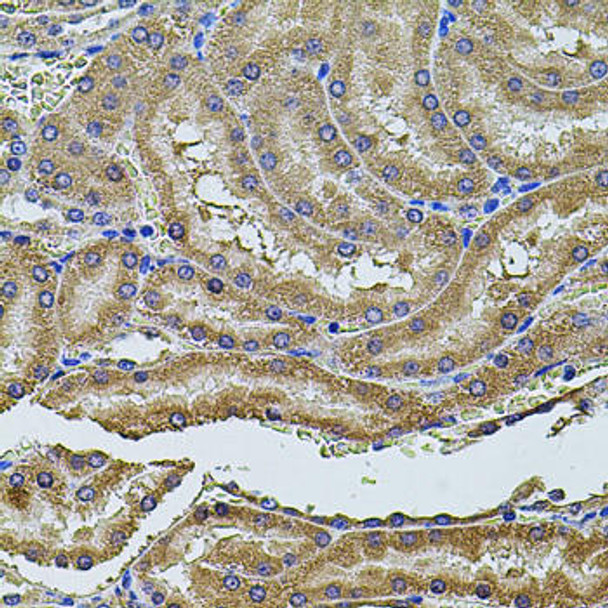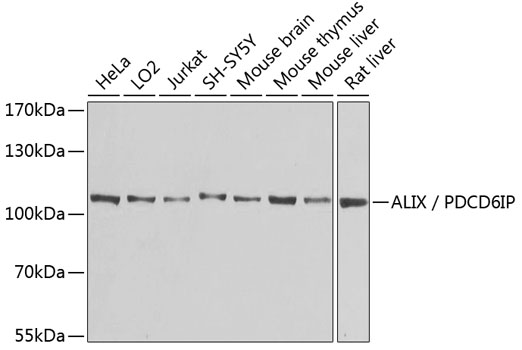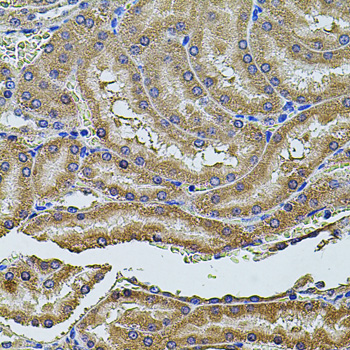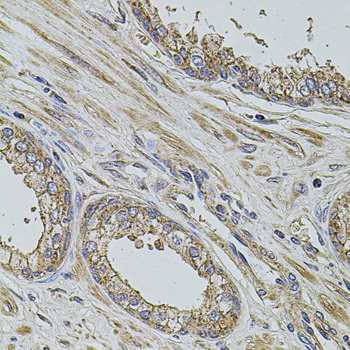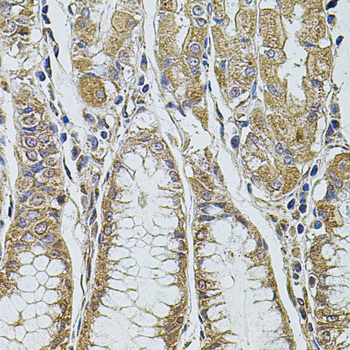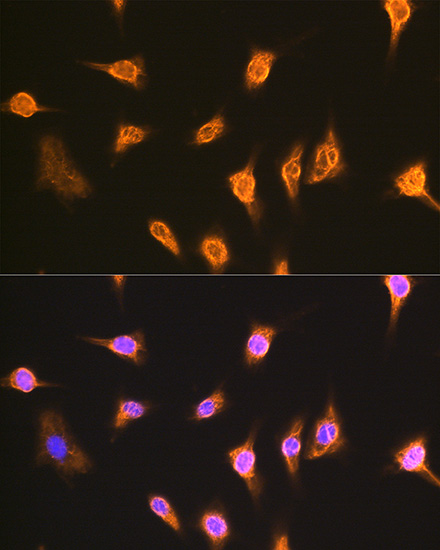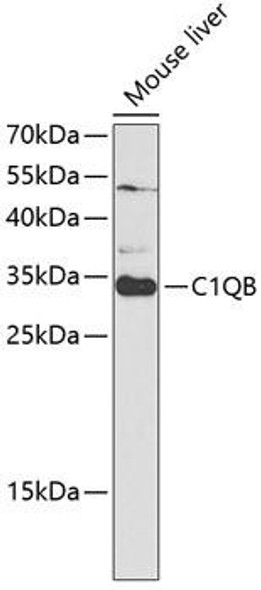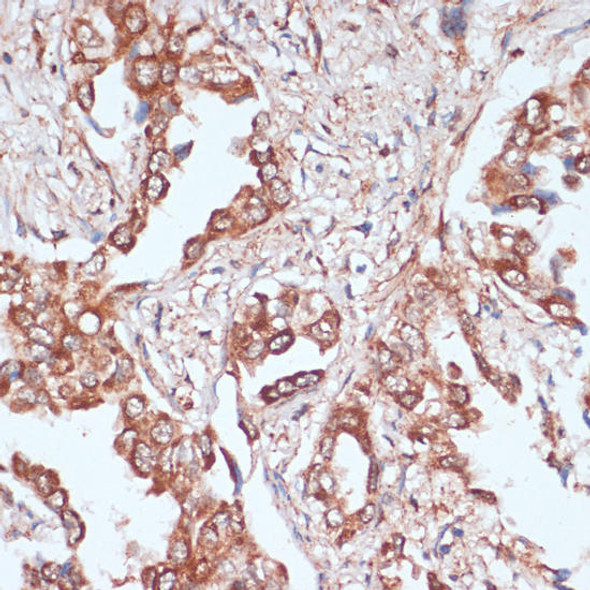Anti-ALIX / PDCD6IP Antibody (CAB2215)
- SKU:
- CAB2215
- Product type:
- Antibody
- Reactivity:
- Human
- Mouse
- Rat
- Host Species:
- Rabbit
- Isotype:
- IgG
- Research Area:
- Cell Death
Frequently bought together:
Description
| Antibody Name: | Anti-ALIX / PDCD6IP Antibody |
| Antibody SKU: | CAB2215 |
| Antibody Size: | 20uL, 50uL, 100uL |
| Application: | WB IHC IF |
| Reactivity: | Human, Mouse, Rat |
| Host Species: | Rabbit |
| Immunogen: | Recombinant fusion protein containing a sequence corresponding to amino acids 1-180 of human ALIX / PDCD6IP (NP_037506.2). |
| Application: | WB IHC IF |
| Recommended Dilution: | WB 1:200 - 1:2000 IHC 1:50 - 1:200 IF 1:50 - 1:200 |
| Reactivity: | Human, Mouse, Rat |
| Positive Samples: | HeLa, LO2, Jurkat, Rat brain |
| Immunogen: | Recombinant fusion protein containing a sequence corresponding to amino acids 1-180 of human ALIX / PDCD6IP (NP_037506.2). |
| Purification Method: | Affinity purification |
| Storage Buffer: | Store at -20°C. Avoid freeze / thaw cycles. Buffer: PBS with 0.02% sodium azide, 50% glycerol, pH7.3. |
| Isotype: | IgG |
| Sequence: | MATF ISVQ LKKT SEVD LAKP LVKF IQQT YPSG GEEQ AQYC RAAE ELSK LRRA AVGR PLDK HEGA LETL LRYY DQIC SIEP KFPF SENQ ICLT FTWK DAFD KGSL FGGS VKLA LASL GYEK SCVL FNCA ALAS QIAA EQNL DNDE GLKI AAKH YQFA SGAF LHIK ETVL SALS REPT VDIS |
| Gene ID: | 10015 |
| Uniprot: | Q8WUM4 |
| Cellular Location: | Cytoplasm, Melanosome, centrosome, cytoskeleton, cytosol, microtubule organizing center |
| Calculated MW: | 30kDa/96kDa |
| Observed MW: | 105kDa |
| Synonyms: | PDCD6IP, AIP1, ALIX, DRIP4, HP95 |
| Background: | This gene encodes a protein that functions within the ESCRT pathway in the abscission stage of cytokinesis, in intralumenal endosomal vesicle formation, and in enveloped virus budding. Studies using mouse cells have shown that overexpression of this protein can block apoptosis. In addition, the product of this gene binds to the product of the PDCD6 gene, a protein required for apoptosis, in a calcium-dependent manner. This gene product also binds to endophilins, proteins that regulate membrane shape during endocytosis. Overexpression of this gene product and endophilins results in cytoplasmic vacuolization, which may be partly responsible for the protection against cell death. Several alternatively spliced transcript variants encoding different isoforms have been found for this gene. Related pseudogenes have been identified on chromosome 15. |
| UniProt Protein Function: | Alix: an adaptor protein that may regulate the function of receptor and cytoskeleton-associated tyrosine kinases. A class E vacuolar protein sorting (VPS) factor involved in concentration and sorting of cargo proteins of the multivesicular body (MVB) for incorporation into intralumenal vesicles. Fusion between endosomes and the vacuole will then target the cargo proteins to the vacuolar lumen. In case of infection, the HIV-1 virus directly takes advantage of its function for viral exocytosis and budding, via its interaction with HIV-1 p6 protein. May play a role in the regulation of both apoptosis and cell proliferation. |
| UniProt Protein Details: | Protein type:Apoptosis; Adaptor/scaffold Chromosomal Location of Human Ortholog: 3p22.3 Cellular Component: focal adhesion; membrane; cytoplasm; melanosome; microtubule organizing center; immunological synapse; cytosol; vesicle Molecular Function:protein binding; protein homodimerization activity; proteinase activated receptor binding; SH3 domain binding; calcium-dependent protein binding Biological Process: protein transport; cell separation during cytokinesis; viral reproduction; apoptosis; viral infectious cycle; mitotic metaphase plate congression; nuclear organization and biogenesis |
| NCBI Summary: | This gene encodes a protein that functions within the ESCRT pathway in the abscission stage of cytokinesis, in intralumenal endosomal vesicle formation, and in enveloped virus budding. Studies using mouse cells have shown that overexpression of this protein can block apoptosis. In addition, the product of this gene binds to the product of the PDCD6 gene, a protein required for apoptosis, in a calcium-dependent manner. This gene product also binds to endophilins, proteins that regulate membrane shape during endocytosis. Overexpression of this gene product and endophilins results in cytoplasmic vacuolization, which may be partly responsible for the protection against cell death. Several alternatively spliced transcript variants encoding different isoforms have been found for this gene. Related pseudogenes have been identified on chromosome 15. [provided by RefSeq, Jan 2012] |
| UniProt Code: | Q8WUM4 |
| NCBI GenInfo Identifier: | 31076831 |
| NCBI Gene ID: | 10015 |
| NCBI Accession: | Q8WUM4.1 |
| UniProt Secondary Accession: | Q8WUM4,Q6NUS1, Q9BX86, Q9NUN0, Q9P2H2, Q9UKL5, C5MQH7 E9PFU1, |
| UniProt Related Accession: | Q8WUM4 |
| Molecular Weight: | 868 |
| NCBI Full Name: | Programmed cell death 6-interacting protein |
| NCBI Synonym Full Names: | programmed cell death 6 interacting protein |
| NCBI Official Symbol: | PDCD6IP |
| NCBI Official Synonym Symbols: | AIP1; ALIX; HP95; DRIP4 |
| NCBI Protein Information: | programmed cell death 6-interacting protein; PDCD6-interacting protein; ALG-2 interacting protein 1; ALG-2-interacting protein X; dopamine receptor interacting protein 4; apoptosis-linked gene 2-interacting protein X |
| UniProt Protein Name: | Programmed cell death 6-interacting protein |
| UniProt Synonym Protein Names: | ALG-2-interacting protein 1; ALG-2-interacting protein X; Hp95 |
| Protein Family: | Programmed cell death 6-interacting protein |
| UniProt Gene Name: | PDCD6IP |
| UniProt Entry Name: | PDC6I_HUMAN |

